The rain outside is knocking the last petals off the tulips and surely bringing new life to weed seedlings all over, but I won’t let that bother me… yet… Instead I’d like to show you around a cemetery which I like to swing by on the way home from work. Don’t be concerned, it’s not a fascination with death which brings me here, it’s the naturalized blanket of creeping phlox (Phlox subulata) which weaves through the grass and flowers at this time of year.
I have no idea if the phlox here were planted originally or came in on their own, but the church financed lawn care hasn’t been intense enough to wipe out the spread of wildflowers between the gravestones. I also believe a kind soul is in charge of the mowing since I saw signs of a recent cut, but only a few patches of the thicker grass were mown and the best flower patches were spared the blade.
Over the decades ‘mildly maintained’ graveyards have a way of picking up flowers and when I have the chance I often give them a looking over for spring flowers, iris plantings, and the occasional rose bush. Someday I hope to find that snowdrop filled meadow, but so far…
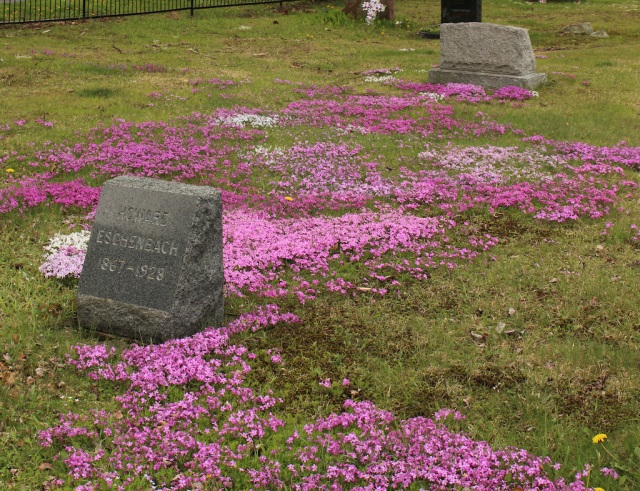
The phlox were probably planted originally, but since then have seeded about to form an interesting mix of colors and flower forms.
Phlox subulata is a plant native to the Northeastern part of this country, and occasionally I also see it growing in rocky outcroppings or gravely roadsides, but never as thickly as it does in graveyards. It’s not a shade plant, so probably as the East coast has grown up in trees or been improved with bluegrass turf, cut and sprayed to golf course quality, this sun loving phlox has been squeezed out and into much smaller locales.
Of course creeping phlox is still growing all over, in foundations plantings and mulch beds everywhere, and in my own childhood garden I’m pretty sure a big chunk of every summer was spent weeding grass blades out of my mother’s phlox planting. As you know though, a grass-free planting of creeping phlox is pretty much impossible.
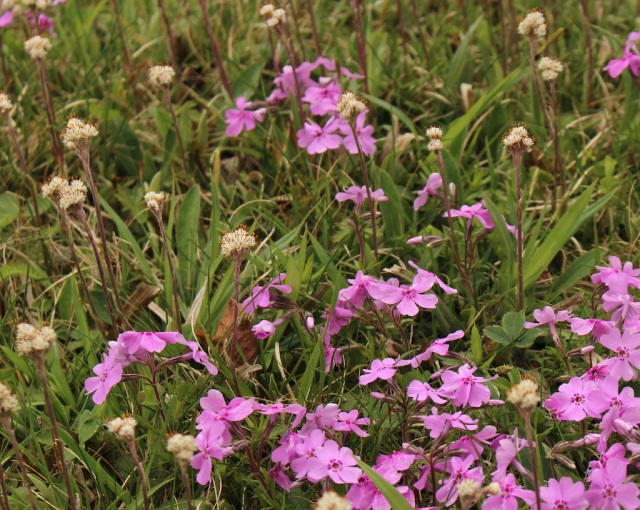
Phlox mixing it up with pussytoes (Antennaria sp), another short wildflower which used to keep lawns everywhere from becoming yawns.
Why fight it then? Just plant your phlox right in the grass 🙂
Easier said than done though. Most lawns are too fertile and the grass and other more common weeds like creeping charlie, dandelions, and white clover will dominate. *My own lawn is an excellent example of this…
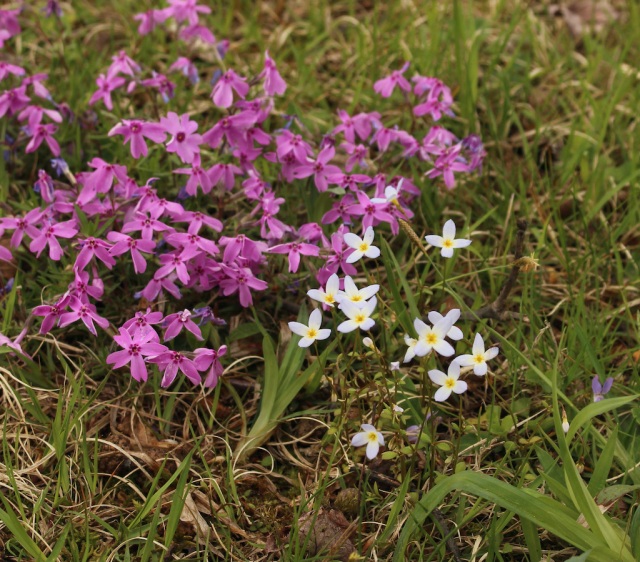
Phlox with a few bluet (Houstonia) alongside. There were a couple more patches of bluets and various violets as well, but the phlox seemed much happier here.
I think more lawns used to be like this. If you travel the older parts of town the lawns are often flecked with all kinds of flowers, both native and introduced, and I think it’s a much more interesting look than the hyped-up green swards which dominate suburbia.
So I hope this little trip to the churchyard was enjoyable. Benign neglect can be a great thing and I may keep this in mind as I consider the ‘wildflowers’ which the rain has brought up throughout my own garden.
Have a great week, and a happy mother’s day to all the moms!
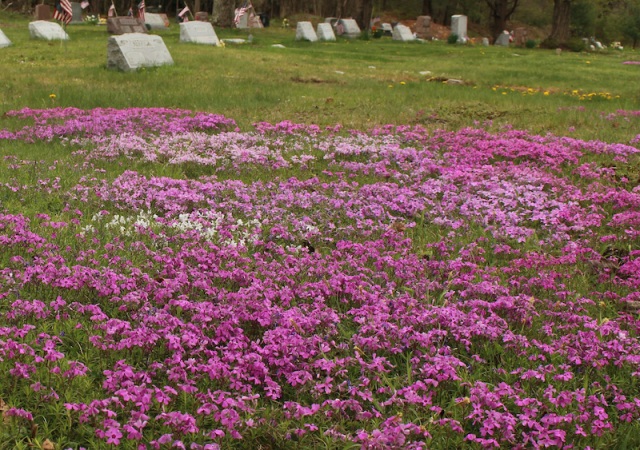

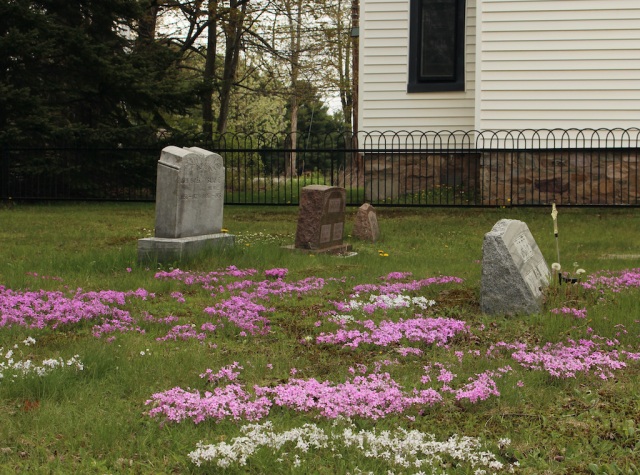

I like that idea, I would be very happy for it to creep over me when my time comes!
I wouldn’t mind either!
Sensitive maintenance will allow for a wonderful flowering opportunity here.
I hope so. It would be nice to see this expand with every new spring.
Wow, I’ve never seen carpets of phlox like this before. Stunning. Many churchyards here are havens for wild flowers but we have nothing like this.
Snowdrops aren’t so bad. I’ve heard they grow here and there in a few churchyards, but they’re far more restrained in color!
Really pretty. Have never seen it grow like that here. 😃 It probably likes being undisturbed in a peaceful environment. 😉
I agree. It seems to be one of those cases where all the right neglect has paid off.
Very pretty, Frank. I agree that grass is impossible to remove from creeping phlox. I got rid of a patch I had on my stone retaining wall as I couldn’t control it. But I do love a wildflower lawn. Mine right now is a bee’s paradise with several varieties of violets, ground ivy, veronica, robin’s plantain and of course, dandelions.
Your lawn sounds perfect. I hope mine fills in like that someday, but did edit out some of the plantains and a few of the biggest dandelion clumps.
I think I need to mow some paths…getting pretty long and ragged in spots. I just have to figure a plan to reach those spots and leave the rest of the flowers – robin’s plantain are just starting. I love a meadow lawn!
I, too, eventually threw in the towel after several years of frenzied but futile attempts to get grass out of the creeping phlox that was here. The straw that broke this camel’s back was finding poison ivy seedlings hiding in some of it one fine May day. Phlox in a lawn definitely is a perfect example of “if you can’t beat ’em, join ’em” though! Whether it was intentional or not. 😀
I know! Phlox is such a grass magnet, it seems to be like that all over and every gardener has that same teasing threads of grass out of a clump story 🙂
Fortunately poison ivy never made its way into mine…
Thumbs up for the Creeping Phlox, if you can get it to work for you. I’m all for clover and violets as well.
I love how wildflower gardens can thrive in unexpected places.